Where to buy Little Bastard?
Less
There are no classified ads for this product.
Tech. sheet
- Manufacturer: Ashdown
- Model: Little Bastard
- Series: Classic All Valve
- Category: Bass Guitar Amp Heads
- Other names:littlebastard
We have no technical specifications for this product
but your help will be much welcomed
»
Videos
User reviews
4.5/5(2 reviews)
5
50 %
4
50 %
3
2
1
Great sound!
Published on 04/15/14 at 12:31 (This content has been automatically translated from French)Power amp lamp (30W)
UTILIZATION
The use is very simple: 3 buttons to adjust the frequencies (bass, treble, medium) and a volume plus boost each frequency. Personally, I think it is a good sound quickly when the settings are limited as is the case on this amp. This amp is only 30W but these are 30W lamp and therefore nothing to do with a transistor amp. I did some rehearsals with me and I could hear perfectly. I did two concerts pub, and same thing, no problem of volume.
SOUNDS
I played this amp with 4 different bass (Musicman Stingray, Ibanez SR Premium, Warwick Corvette $ $, Fender Jazz Bass U.S.). It fully complies with the instrument, which is very pleasant. And heat lamps is...…
UTILIZATION
The use is very simple: 3 buttons to adjust the frequencies (bass, treble, medium) and a volume plus boost each frequency. Personally, I think it is a good sound quickly when the settings are limited as is the case on this amp. This amp is only 30W but these are 30W lamp and therefore nothing to do with a transistor amp. I did some rehearsals with me and I could hear perfectly. I did two concerts pub, and same thing, no problem of volume.
SOUNDS
I played this amp with 4 different bass (Musicman Stingray, Ibanez SR Premium, Warwick Corvette $ $, Fender Jazz Bass U.S.). It fully complies with the instrument, which is very pleasant. And heat lamps is...…
Read more
Power amp lamp (30W)
UTILIZATION
The use is very simple: 3 buttons to adjust the frequencies (bass, treble, medium) and a volume plus boost each frequency. Personally, I think it is a good sound quickly when the settings are limited as is the case on this amp. This amp is only 30W but these are 30W lamp and therefore nothing to do with a transistor amp. I did some rehearsals with me and I could hear perfectly. I did two concerts pub, and same thing, no problem of volume.
SOUNDS
I played this amp with 4 different bass (Musicman Stingray, Ibanez SR Premium, Warwick Corvette $ $, Fender Jazz Bass U.S.). It fully complies with the instrument, which is very pleasant. And heat lamps is well.
This amp does not have a fan, which for me is a huge advantage when playing at low volume at home because on most amps, you hear the fan over his bass when playing at low volume.
OVERALL OPINION
I had a lot of amp (Mark bass, Gallien Krueger, Crate, ...).
I have a weakness for Gallien Kruger (MB series) but Ashdown is super convenient because very light for a tube amp and power is well.
Used this amp is not very expensive, so it is a good deal
UTILIZATION
The use is very simple: 3 buttons to adjust the frequencies (bass, treble, medium) and a volume plus boost each frequency. Personally, I think it is a good sound quickly when the settings are limited as is the case on this amp. This amp is only 30W but these are 30W lamp and therefore nothing to do with a transistor amp. I did some rehearsals with me and I could hear perfectly. I did two concerts pub, and same thing, no problem of volume.
SOUNDS
I played this amp with 4 different bass (Musicman Stingray, Ibanez SR Premium, Warwick Corvette $ $, Fender Jazz Bass U.S.). It fully complies with the instrument, which is very pleasant. And heat lamps is well.
This amp does not have a fan, which for me is a huge advantage when playing at low volume at home because on most amps, you hear the fan over his bass when playing at low volume.
OVERALL OPINION
I had a lot of amp (Mark bass, Gallien Krueger, Crate, ...).
I have a weakness for Gallien Kruger (MB series) but Ashdown is super convenient because very light for a tube amp and power is well.
Used this amp is not very expensive, so it is a good deal
See less
70
»
Small but powerful!
Published on 02/24/13 at 06:08 (This content has been automatically translated from French)This is an amp all-tube 30 Watts power that delivers all-in-fact for competitive transistor 100 Watts. Proof is that even in concert (small rooms) I never pushes the volume beyond half!
It has 2 input jacks (active / passive), an effects loop in jack, two jack outputs for speaker in (8 and 4 ohms) and an XLR DI output. The latter recovers its position "Pre" (before EQ and effects loop) and unfortunately can not be switched to "Post" (after all that). In addition, this output is set to a particularly high noise level.
The settings are both simple and effective:
- 1 volume knob with a switch Mute
- 3 Equalizer knobs whose order is a bit surprising but which one gets used quickly:...…
It has 2 input jacks (active / passive), an effects loop in jack, two jack outputs for speaker in (8 and 4 ohms) and an XLR DI output. The latter recovers its position "Pre" (before EQ and effects loop) and unfortunately can not be switched to "Post" (after all that). In addition, this output is set to a particularly high noise level.
The settings are both simple and effective:
- 1 volume knob with a switch Mute
- 3 Equalizer knobs whose order is a bit surprising but which one gets used quickly:...…
Read more
This is an amp all-tube 30 Watts power that delivers all-in-fact for competitive transistor 100 Watts. Proof is that even in concert (small rooms) I never pushes the volume beyond half!
It has 2 input jacks (active / passive), an effects loop in jack, two jack outputs for speaker in (8 and 4 ohms) and an XLR DI output. The latter recovers its position "Pre" (before EQ and effects loop) and unfortunately can not be switched to "Post" (after all that). In addition, this output is set to a particularly high noise level.
The settings are both simple and effective:
- 1 volume knob with a switch Mute
- 3 Equalizer knobs whose order is a bit surprising but which one gets used quickly: Middle, Bass, Treble
- 1 equalizer on each switch to determine which portion of the frequency knob will act
No built-in effects, but the loop can add whatever you want. Personally, I play no effect for now. Later maybe, but that's another story ...
UTILIZATION
Configuration, as shown above, could not be more simple: 3-band EQ with frequency switches to refine. Not really need manual once, unless you want to know what technically modify the switches ...
Getting a good sound I was taken little time. A snooze or two and presto! I did not touch anything, and I sound I like: D
That said, it is true that I happened to connect to another speaker than mine, and suddenly rendered clearly was not the same (FYI, my cabinet is a Ashdown VS 212-200) .
My only small complaint - which is probably more the way I connect -: DI output makes the sound too powerful for connection to mixing desk ... Finally, it seems. I tried once, and the sound engineer was not famous, so the problem may be there ...
SOUNDS
The Little Bastard is exactly the amp I was hoping to find.
Playing rock punk-grunge trend or slightly metallizing, I wanted an amp that gives me a little saturation snapping while delivering low frequencies present. And here I am ready!
After some testing settings, as I said earlier, I quickly found THE sound I was looking for.
Admittedly, my method is perhaps not very academic, but here it is:
I play on an Ibanez SR505-BM. It is a 5-string bass active, I plugged into the passive input of the amp. My bass also has one 3-band EQ on which I push the medium thoroughly switches on the high range (bass and treble remain in the middle). On the amp, I get the mediums and treble at 2:00 and goes low at 10 hours.
Result: see above.
Plugging bass active passive input gives this small saturation that is so sweet to my ears ... But I also think it is the problem of volume delivered by the output ID.
OVERALL OPINION
I bought this amp last spring, after trying a few other models, including a Fender Bassman TV Fifteen or modeling amp (TC Electronix) I do not remember the model. The Fender I really liked, but the EQ settings were too soft, and the sound was issued may be very pretty, it sounded too round for my style of play ... TC Electronix hum ... In short, 2 minute test and I knew it was out of the question!
Since its purchase, I can not do without my little bastard: to snooze in concert, and even at home (well, I stopped after a few complaints from neighbors), I'm a fan of his report.
Difficult to say what I love the most ... No doubt this small natural saturation generated by connecting an active low input passive.
What I like least: the absence of switch Pre / Post on the DI output.
I bought this head with a body in Ashdown 2x12 for a total price of about 1,000 euros (about 100 €, I do not remember exactly), and honestly, I think the price / quality ratio very correct. I wanted to treat myself with a tube amp, and yes, I am well pleased. My ears do not swear by it, and my guitar is almost jealous!
Without hesitation, you guessed it, I would do this choice with closed eyes and ears wide open!
It has 2 input jacks (active / passive), an effects loop in jack, two jack outputs for speaker in (8 and 4 ohms) and an XLR DI output. The latter recovers its position "Pre" (before EQ and effects loop) and unfortunately can not be switched to "Post" (after all that). In addition, this output is set to a particularly high noise level.
The settings are both simple and effective:
- 1 volume knob with a switch Mute
- 3 Equalizer knobs whose order is a bit surprising but which one gets used quickly: Middle, Bass, Treble
- 1 equalizer on each switch to determine which portion of the frequency knob will act
No built-in effects, but the loop can add whatever you want. Personally, I play no effect for now. Later maybe, but that's another story ...
UTILIZATION
Configuration, as shown above, could not be more simple: 3-band EQ with frequency switches to refine. Not really need manual once, unless you want to know what technically modify the switches ...
Getting a good sound I was taken little time. A snooze or two and presto! I did not touch anything, and I sound I like: D
That said, it is true that I happened to connect to another speaker than mine, and suddenly rendered clearly was not the same (FYI, my cabinet is a Ashdown VS 212-200) .
My only small complaint - which is probably more the way I connect -: DI output makes the sound too powerful for connection to mixing desk ... Finally, it seems. I tried once, and the sound engineer was not famous, so the problem may be there ...
SOUNDS
The Little Bastard is exactly the amp I was hoping to find.
Playing rock punk-grunge trend or slightly metallizing, I wanted an amp that gives me a little saturation snapping while delivering low frequencies present. And here I am ready!
After some testing settings, as I said earlier, I quickly found THE sound I was looking for.
Admittedly, my method is perhaps not very academic, but here it is:
I play on an Ibanez SR505-BM. It is a 5-string bass active, I plugged into the passive input of the amp. My bass also has one 3-band EQ on which I push the medium thoroughly switches on the high range (bass and treble remain in the middle). On the amp, I get the mediums and treble at 2:00 and goes low at 10 hours.
Result: see above.
Plugging bass active passive input gives this small saturation that is so sweet to my ears ... But I also think it is the problem of volume delivered by the output ID.
OVERALL OPINION
I bought this amp last spring, after trying a few other models, including a Fender Bassman TV Fifteen or modeling amp (TC Electronix) I do not remember the model. The Fender I really liked, but the EQ settings were too soft, and the sound was issued may be very pretty, it sounded too round for my style of play ... TC Electronix hum ... In short, 2 minute test and I knew it was out of the question!
Since its purchase, I can not do without my little bastard: to snooze in concert, and even at home (well, I stopped after a few complaints from neighbors), I'm a fan of his report.
Difficult to say what I love the most ... No doubt this small natural saturation generated by connecting an active low input passive.
What I like least: the absence of switch Pre / Post on the DI output.
I bought this head with a body in Ashdown 2x12 for a total price of about 1,000 euros (about 100 €, I do not remember exactly), and honestly, I think the price / quality ratio very correct. I wanted to treat myself with a tube amp, and yes, I am well pleased. My ears do not swear by it, and my guitar is almost jealous!
Without hesitation, you guessed it, I would do this choice with closed eyes and ears wide open!
See less
100
»
Other Ashdown bass Guitar Amp Heads
-
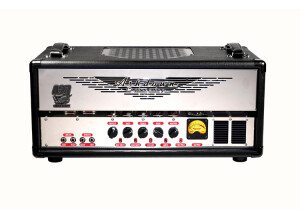
427 Small Block
Bass Guitar Amp Head
-
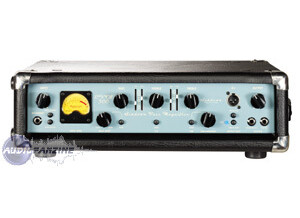
ABM 500 EVO II Head
Bass Guitar Amp Head
-
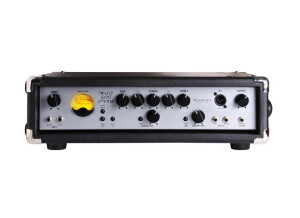
MAG 600H EVO II Head
Bass Guitar Amp Head
-

AL-AD600 Amp Head
Bass Guitar Amp Head
-
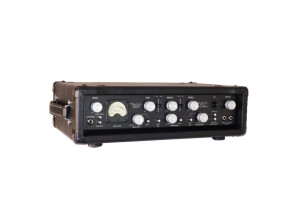
ABM 500 RC EVO III Head Black Edition
Bass Guitar Amp Head
-

ABM 300 Evo II Head
Bass Guitar Amp Head
-

ABM 900 EVO Head
Bass Guitar Amp Head
-
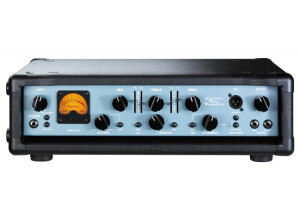
ABM 500 EVO III Head
Bass Guitar Amp Head
-
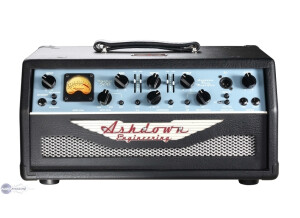
Klystron 500 Head
Bass Guitar Amp Head
-

CTM-100
Bass Guitar Amp Head
Other categories in Bass Amplifiers
Where to buy Little Bastard?
Less
There are no classified ads for this product.












